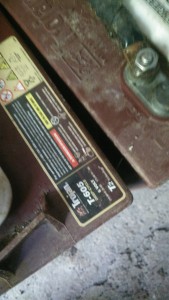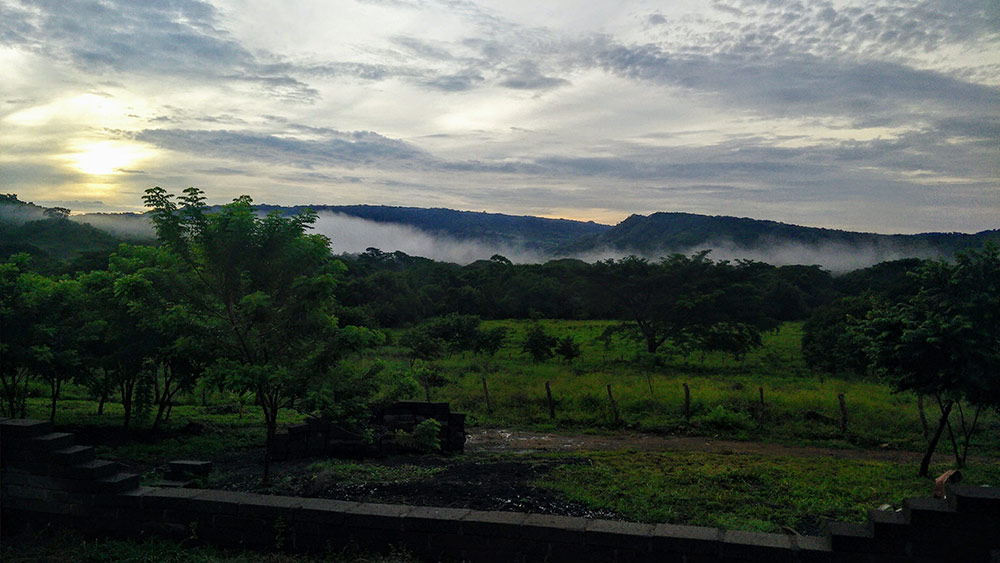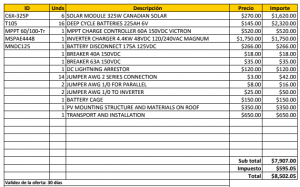We chose our land here in Nicaragua because of its beautiful valley views, easy access to potable water and it came in at a great price. We quickly jumped on our first task of digging a well. With electric poles only 260m away we also that would be a slam dunk. We started by getting prices by local know electricians who know how to lay big lines like these. The quotes were coming in a lot higher than we thought and I could foresee lots of additional costs being tacked on once we were financially invested. Around $13k is what we were hearing to put in poles which was out of our budget. So, one morning Jenna says to me, what about solar? My initial assumption was “no way,” that would be a large investment definitely out of our wheel-house. Just imagine how much energy we use and how much we’ll need everyday.
First thing I did after pouring in hours and hours on Youtube and Google was obtain a copy of our last few electric bills. 12 kilowatts. We use 12 kilowatts per day at the house that we were staying at (372kw / month). The house we were building would be 75% of the size of our rental, so I accounted for that and a few other efficient items we would add and came to the number of 7.5kw.
I went to several local representatives here in Nicaragua, both Nicaraguan and Foreigners. They all wanted to know what our current usage was and use that 12kw number to create our system. They were insistent that we would use that or more at our new house. This is what I’ve come to understand:
- A solar sales rep becomes the engineer that decides on a system that you’ll buy which directly benefits him to give you a system larger than you need. With their logic a 50kw system is more comfortable than a 25kw system which is true, but I don’t need either one of them
- Consider solar extremely modular. If you need more just add it on.
- Complementing your system with a generator is extremely inexpensive. Make sure to have a generator in case your system is under-sized for any situation.
- Here in Nicaragua, a cloudy day still generates power.
Now, the nitty gritty with laymen’s explanations:
A solar powered system needs 4 major components:
Solar Panels – Charge Controller – Batteries – Inverter/Charger
 Solar Panels – Everyone understands these, they collect the Suns energy and turn it into electricity. Think of this electricity as not directly usable, so you need all of the pieces to make the energy usable. Why? Imagine you were using the energy directly from the panels and a cloud passed by. Your electrical output from those panels would drop significantly and can’t provide you with a stable stream of electricity. So for that reason, you need all the other parts.
Solar Panels – Everyone understands these, they collect the Suns energy and turn it into electricity. Think of this electricity as not directly usable, so you need all of the pieces to make the energy usable. Why? Imagine you were using the energy directly from the panels and a cloud passed by. Your electrical output from those panels would drop significantly and can’t provide you with a stable stream of electricity. So for that reason, you need all the other parts.
Batteries – These store the energy for when you’d like to turn on the lights at night time. They also provide a stable stream of electricity to your house. So, all of the power you collect has to go through the batteries.
Charge Controller – This device goes between your Solar Panels and your Batteries. Batteries are sensitive and this device ensures that they are charged in a manner that will make them last and inevitably not spill acid everywhere from over-charging. For example, after your batteries are full if your panels are still generating power the charge controller will ensure that you’re dumping that power and not damaging your batteries. This is the easiest piece of the system that you don’t really need to worry to much about.
Inverter/Charger – This is the heart of the system. If I were to say you should splurge on any part of the system this is the piece. This takes the power from the batteries and delivers it to your house in a way that you can plug in your blow-dryer and it just works. The charger part allows you to charge your batteries with a generator. Inverters come only as inverters or as inverter/chargers. The latter is a necessity in living off-grid. The charger part lets you charge your batteries with a generator. Ours will even kick-on the generator when it needs to automatically.
Pricing:
Our Entire system costed $8,400. We started with a $7,400 system, but later added another string of batteries for $1,100. We expected this.
Solar Panels: (6) 325 watt panels at .83/watt – $1620 (update 11/19/2017: in Nicaragua you can get .81/watt now) – In the states you can expect 4 hours of usable sun per day. 6+ hours seems to be pretty regular here in Nicaragua. Our 1950w system on average will product about 12kw per day. Our string of 8 batteries on a sunny day are fully charged by 11:30am.
Batteries: (8) 6 volt 210 amp – $1160 – This gives you about 10kw of which only 5kw are usable. So, when the sun goes down, we’ve got 5kw before the power goes out.
Charge Controller: 60 amp MPPT Victron – $520 – a necessity that does its job.
Inverter: Magnum 4448 Inverter/Charger – $2000 – This is one of the best you can get. It can handle 4kw of energy and can spike to 7000kw for up to 30 minutes. It’s quite impressive actually and has rave reviews on Amazon.
Some quick math and that doesn’ t add up to $8,500, only $5,300. There are a bunch of ancillary items for safety and stuff. Wires to connect the system, battery disconnects so that if something goes wrong it doesn’t ruin the whole system, transport, installation. Also, I only bought half of the batteries to start.
Aside of the 4 main items the wiring can add up a bit. The distance from your solar panels to the batteries can increase the size of the wires necessary, we created a secure bodega to house all of our stuff. We also skipped the battery cage, which we’ll add something to stack the batteries now that we’ve finally purchase the last 8, which by the way were $100 cheaper than 6 months ago.
Below is a screenshot of pricing that I got from Suni-Solar, Douglas is easy to deal with and speaks really good english.
We ended up saving on Transport and Installation by picking up a lot of it on our own and we used someone else (on the side) to install the system. Douglas is Managua based and was having a hard time finding the time to come and do our installation.
We are in the process of completing the rainy season here and probably could maintain life with just our 8 batteries. The problem is that over the years we will use these and probably run them to the floor of 50% more than I’d want shortening the life of the batteries. Adding a second string of batteries gives us a bit more freedom and ensures our 900 watt coffee maker can do its very important job in the morning 365 days out of the year. The last item we need is a bigger generator. Our current generator can power the house, but not power the house and charge the batteries, so 3500 watts is not sufficient, so we’re in the market to up that to 6000 watts.
I’ll continue to update this as more info comes in.

